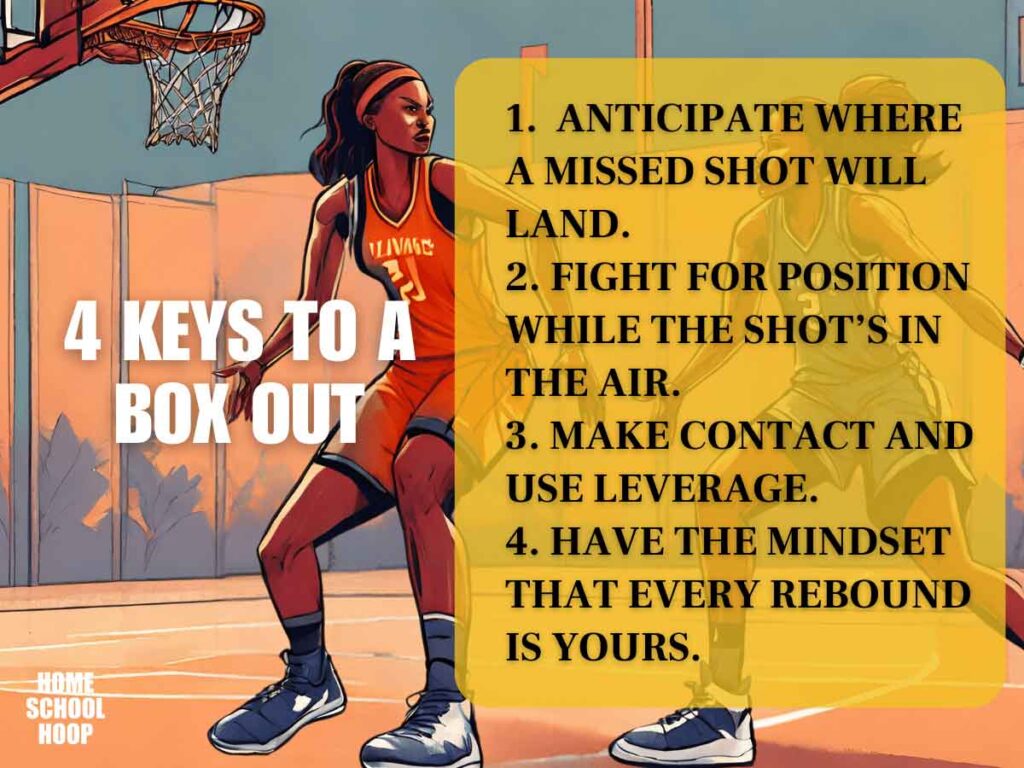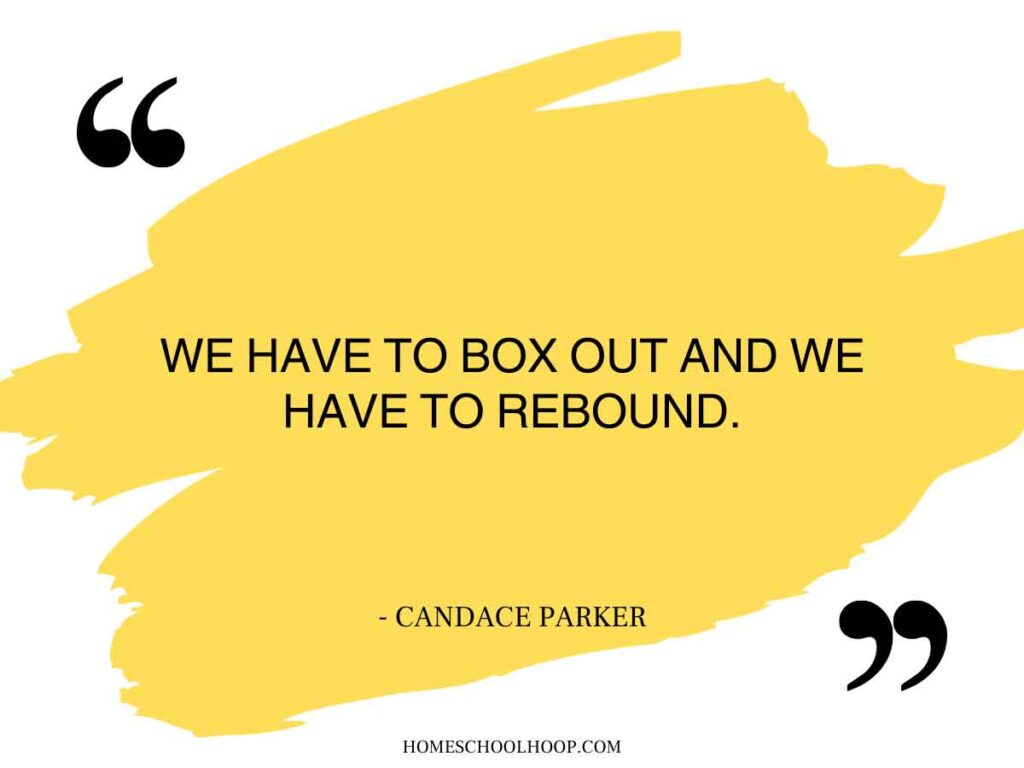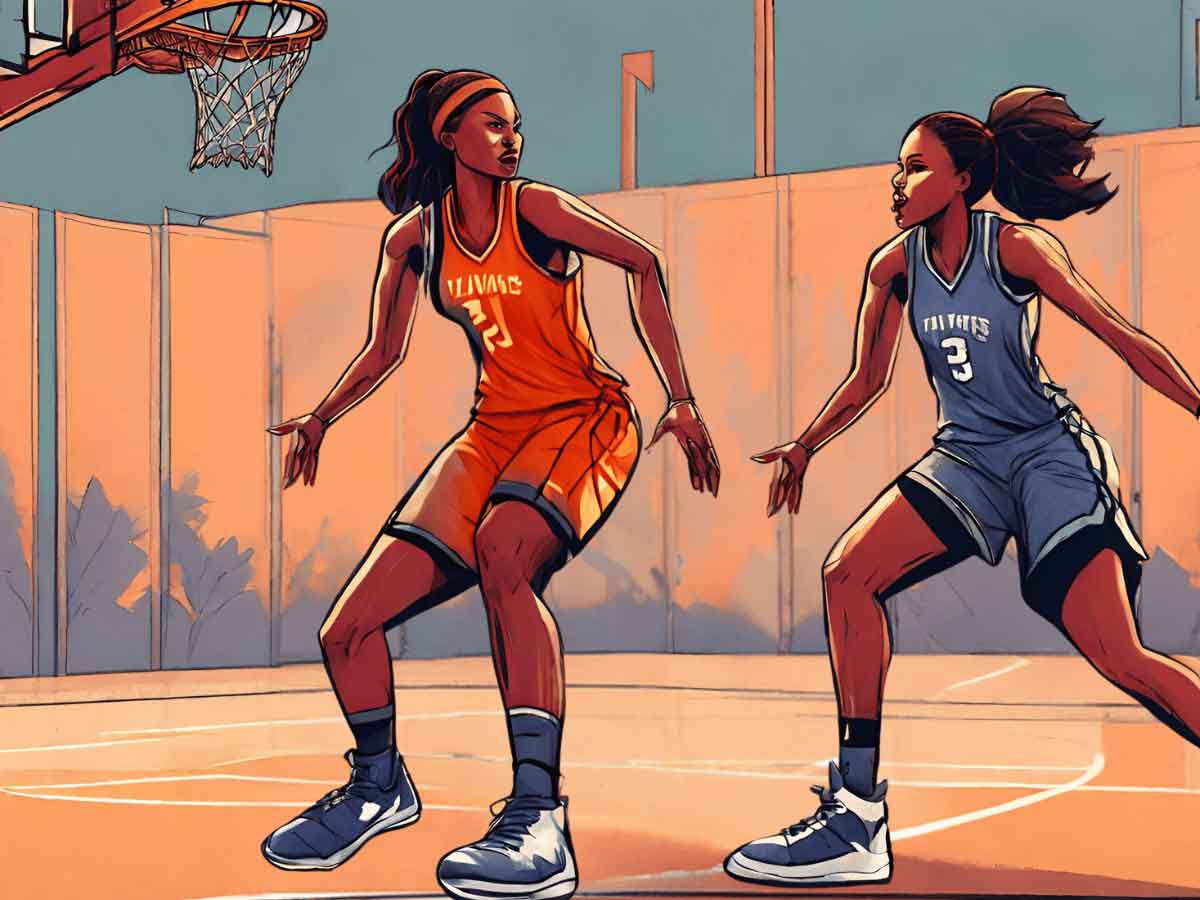Coaches will tell you securing a rebound can be the difference between winning and losing. That’s why learning to box out in basketball is crucial. Mastering this skill boosts your team’s chances of controlling the ball. But what is a box out in basketball, and why is it so important?
Key Takeaways:
- Boxing out is a fundamental basketball technique that helps players win rebounds.
- The act of boxing out involves securing an advantageous rebounding position against an opponent by blocking their path to the ball.
- A good box out leads to more chances for your team to score by increasing the number of times you get the ball.
Boxing out isn’t just about physical strength; it’s a blend of anticipation, position, and grit. No matter whether you’re a guard or a center, learning to box out makes you an invaluable asset to your team.
In this guide, we’re going to break down the box out in basketball. We’ll cover the basic technique to advanced drills to help players dominate the boards.
The Basics of Boxing Out
What is Boxing Out?
Boxing out in basketball is a way to position yourself between the opposing player and the basket to better your chances of catching a rebound. It involves using your body as a shield to secure the ball after a missed shot.
Being physically fit helps with boxing out and getting a rebound in basketball. You need enough agility to get into position of shielding out your opponent, and enough strength to hold it. But, the right mindset can’t be understated; the best at boxing out have a relentless desire to rebound.
A quality box out can change a game’s outcome. Every secured rebound limits shot opportunities for your opponent while giving your team more chances to score.
4 Steps to a Proper Box Out
The basics of a box out involves four steps:
- Watch and Anticipate: Keep your eyes on the ball’s path towards the rim. Guessing where the ball will end up is key to getting into the right position.
- Get Into Position: Find the opponent you need to box out. Get close to them, facing the basket, with your feet wider than your shoulders for stability.
- Make Contact: Use your back or side to contact your opponent. This helps you establish your space and keep them behind you.
- Go Get the Rebound: With your opponent blocked, reach your arms out, and get ready to jump for the ball. Grab the rebound with both hands and pull it in.
Techniques to Box Out in Basketball
There are 4 primary keys to boxing out successfully, regardless of whether you’re on offense or defense.
- Improve your ability to anticipate where a missed shot will land. You can work on developing this instinct for the ball in every practice, scrimmage, and game by observing shooting angles and how the ball tends to bounce off the rim.
- Fight for position during the shot’s flight time. Always try to get inside position–closer to the basket than your opponent. This gives you the best chance of coming down with the rebound.
- Once you’ve got the inside position, use leverage by lowering your center of gravity. This helps you hold your ground and makes it harder for opponents to push past you.
- Be aggressive and determined. All players great at boxing out have the mindset that every rebound is theirs. They have the attitude that they will go after every missed shot.

The techniques of boxing out apply no matter the game situation, but it’s best if you adapt your approach depending on whether you’re going for defensive rebounds, offensive rebounds, or battling for missed free throws. Here are some considerations for each scenario.
Boxing Out for Defensive Rebounds
- Stay Alert: Always be ready to move into the box out position as soon as a shot is taken. Have awareness of the shooter, the player you’re defending, and the ball.
- Hold Your Inside Position: Keep your player away from the basket by lowering your center of gravity so you’re harder to move.
- Take Up Space: Leverage your body by placing your back or side against the opponent. If you can, keep your arms wide to occupy more space.
- No Plays Off: It can be easy to slack off rebounding as a defender because you likely already have the inside position. But if you do, a good offensive rebounder will get around you and make you pay.
Boxing Out for Defensive Rebounds
- Battle for Inside Position: As the shot is in the air, use quick, short steps to try to get inside position. Maneuver around your defender so you position your body between them and the potential rebound.
- Be Aggressive: Offensive box outs take more aggression since you’re likely starting from a disadvantageous rebounding position.
- Look for Gaps: Find spaces between defenders and position yourself in these gaps to increase your chances of grabbing the rebound.
TRIVIA:
Who is considered one of the best rebounders in NBA history because of their exceptional boxing-out techniques?
Clue 1: This player was famous for his defensive tenacity and colorful personality.
Clue 2: He won five NBA championships during his career.
Clue 3: Despite being relatively undersized, he led the NBA in rebounds per game for seven consecutive seasons in the 1990s.
Scroll to the bottom for the answer.
Drills to Improve Your Boxing Out Skills
Getting better at boxing out takes practice. Here are a few drills that focus on the fundamentals of boxing out. Adding these drills to your practice sessions can improve your rebounding skills. If you’re a player trying to get better on your own, use every game-like opportunity in practice to work on your box out skills.
Drill #1: Basic Box Out Drill
Goal: Practice the fundamental steps of boxing out against an opponent.
Steps:
- Pair up with a teammate; one plays offense and the other defense.
- The coach or another player shoots the ball.
- The defensive player quickly finds the offensive player, establishes contact, and boxes them out to secure the rebound. At the same time, the offensive player tries to get inside position.
- Switch roles after each attempt.
Drill #2: Mirror Boxing Out Drill
Goal: Improve quick positioning for boxing out.
Steps:
- Without a ball, one player attempts to get past the other to reach a specific spot (simulate the basket area).
- The defender uses boxing out techniques to block the offense.
- Practice in short bursts, then switch roles.
Drill #3: Free Throw Boxing Out Drill
Goal: Practice boxing out during free throw situations.
Steps:
- Players line up as they would during a free throw, with offensive and defensive players alternating positions.
- A player takes a free throw shot, intentionally missing to allow for the practice of boxing out.
- Players focus on getting into their box out positions and securing the rebound.
Common Mistakes and How to Avoid Them
Even the best rebounds can make mistakes when trying to box out in basketball. Recognizing and correcting these errors can help you make a positive impact on your team and potentially pull down a game-changing rebound.
Mistake 1: Standing and Watching the Shot
- What It Is: Turning and watching the shot without getting into a box out position.
- How to Fix It: While the shot is traveling toward the rim, fight to get into position between the rim and your opponent so you serve as a barrier between them and the rebound.
Mistake 2: Lack of Contact
- What It Is: Failing to make contact with your opponent so they’re able to move freely around you.
- How to Fix It: Use your back or side to physically contact your opponent so you can control their movement.
Mistake 3: Not Anticipating the Ball’s Trajectory
- What It Is: Not consciously tracking or reacting to the shot’s trajectory so you’re caught off guard when it comes time to rebound.
- How to Fix It: Keep your eyes on the ball as the shot goes up and try to predict where it will land so you can position yourself effectively.
The Mental Game
So much of our focus so far has been on the technical aspect of boxing out, but just as important, if not more, is the mental side. Your attitude for rebounding plays a huge role in how effectively you box out and get boards for your team.
So much of a quality box out is staying mentally engaged in the game. This helps you maintain a controlled aggression that drives you to pursue every rebound as if it’s the most important play of the game.
If you struggle to find that aggressive attitude and mental alertness, consider using quick self-reminders when shots go up. Over time, you’ll get into a routine of always asserting your position and going after rebound switch determination.

FAQs
What is box out in basketball?
Boxing out in basketball is when a player positions themselves between an opponent and the basket to grab a rebound. It involves using your body to create a barrier to secure the ball.
How do you box out effectively?
To box out effectively:
- Watch the ball and anticipate where it will land.
- Quickly position yourself between your opponent and the basket.
- Lower your center of gravity and keep your stance wide.
- Use your body to maintain space between you and the opponent.
- Jump for the rebound with both hands ready to secure the ball.
How do you get players to box out?
To encourage players to box out in basketball:
- Emphasize the importance of rebounding in winning games.
- Include boxing out drills in practice to develop the skill.
- Provide positive feedback and recognition for successful boxing out.
- Review game footage to highlight effective and missed boxing out opportunities.
Do NBA players box out?
Yes, NBA players box out. Although some players are better about it than others. Still, it remains a fundamental skill that’s crucial for controlling rebounds and the flow of the game. Even at the professional level, the ability to box out can make a significant difference in a team’s defensive and offensive success.
How do you stop being boxed out in basketball?
To avoid being boxed out:
- Use quick movements to avoid the initial box out attempt.
- Stay active and ready to move around the player trying to box you out.
- Improve your agility and strength to maneuver into a better position.
- Anticipate the ball’s trajectory so you can position yourself advantageously even when being boxed out.
LET US KNOW
Today, you learned about the box out in basketball.
So we want to know: What challenges have you faced when trying to box out, and how did you overcome them?
Share tips and strategies that have worked for you in the comments.
The TRIVIA answer is Dennis Rodman.

